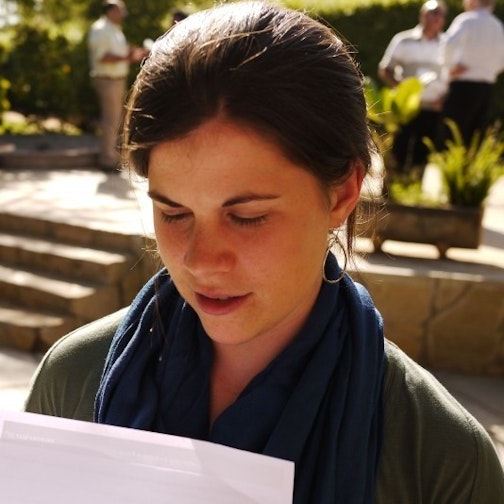Fast, Clean, and Cheap
Cutting Global Warming's Gordian Knot
-
-
Share
-
Share via Twitter -
Share via Facebook -
Share via Email
-
In January 2008, the Harvard Law and Policy Review published "Fast, Clean, and Cheap," which argued that the vast price gap between fossil fuels and clean energy sources combines with public resistance to higher energy prices to create a fundamental constraint on the efficacy of carbon pricing to drive emissions reductions everywhere in the world.
This dynamic creates a “Gordian Knot” for policymakers focused on pollution regulation. If they price pollution too low, firms will just pass the higher energy prices along to consumers and invest little to nothing in clean energy, efficiency, or conservation. But if policymakers set the price too high, higher energy prices will trigger a voter backlash that will result in the repeal or non-enforcement of regulations and a discrediting of climate policy.
Even if governments successfully put a high price on carbon, doing so would not dramatically reduce carbon dioxide emissions. Technological breakthroughs, the authors argue, are needed to boost the performance of clean energy technologies and ultimately decrease the costs of deploying them. To that end, the paper has seven specific policy recommendations:
1) Establish a Price for Carbon Dioxide That Is Consistent With What Present Technology Can Accomplish
2) Establish a Dedicated Source of Public Funding for Clean Energy Investment That Can Rapidly Drive Down the Deployed Cost of Clean Energy Technologies
3) Ramp Up: Invest $300 Billion in Research, Development, and Deployment of Clean Energy Technologies
4) Insulate Federal Clean Energy Investments From Pork-Barrel Politics
5) Buy Down the Price of Solar Technology Like We Did With Microchips
6) Play the Field: Make Strategic Investments in Key Energy Sectors and Technologies
7) Create a Framework for Global Carbon Regulation Tied to Living Standards
INTRODUCTION
In the Greek legend, King Midas used a complicated knot to tie his father’s ox cart to a post. An oracle prophesied that the one who untied the cart—which symbolized Apollo’s father, Zeus—would rule the kingdom. For many years the knot stymied all who attempted to untie it. Then, one day, rather than trying to untie the knot, the young Alexander simply cut the rope with his sword. Alexander went on to become a brilliant military commander and, eventually, King of Macedon.
The story is traditionally interpreted to mean that one can often solve seemingly impossible problems with a single and simple bold stroke. But there are two other morals to the story. First, to find solutions, one must see old problems in a new light. Alexander saw the problem as freeing the ox cart from the post, rather than untying the knot.
Alexander’s new perspective—what is sometimes called a “gestalt shift”—was a prerequisite to cutting the Gordian Knot. Second, cutting the knot involved a kind of rebellion. The oracle’s prophecy specified that the knot be untied. In cutting the knot Alexander had to, paradoxically and audaciously, violate the conventional meaning of the oracle’s prophesy in order to realize it.
Today, there is a dilemma—a “Gordian Knot”—at the heart of any effort to deal with global warming. If policymakers limit greenhouse gases too quickly, the price of electricity and gasoline will rise abruptly, triggering a political backlash from both consumers and industry. But if policymakers limit greenhouse gases too slowly, clean energy alternatives will not become cost-competitive with fossil fuels in time to prevent catastrophic global warming.
This essay argues that both a gestalt shift and a bold stroke are required to cut the Gordian Knot at the heart of today’s energy challenge. Many policymakers view the problem of global warming as a pollution problem, similar to acid rain, smog, or the ozone hole. But whereas addressing the ozone hole required a simple and inexpensive chemical substitute, global warming demands a totally different way of producing energy. We were able to fight smog without replacing oil. We dealt with acid rain without dismantling our power plants. And we will continue to phase out ozone-depleting chemicals without affecting any of our energy sources.
To deal with global warming, we will need an entirely new energy infrastructure. Creating a new energy infrastructure is more comparable to the creation of the railroads, the interstate highway system, personal computers, the Internet, and the space program than it is to installing catalytic converters and scrubbers, or phasing out ozone-depleting chemicals. The latter involved mere technical fixes, not wholesale technological revolutions.
Environmentalists have been so focused on making clean energy relatively cheaper (by imposing regulations that make dirty energy expensive) that they overlook the possibility of making clean energy absolutely cheaper through major investments in technology innovation and infrastructure. The good news, however, is that the current regulation-centered approach can potentially become an investment-centered approach. For instance, the dominant proposals addressing global warming would auction mandatory pollution permits to U.S. companies. Depending on how the auction is structured, the sale of pollution permits could generate between $30 and $250 billion per year for clean energy. This money would come from higher energy prices, however, and in order for the American public to agree to such a project, voters must be inspired by the project’s potential to free the United States from oil and to create jobs through technology innovation.
In the end, it was impossible—and unnecessary—to untie the Gordian Knot. All that was needed was to free the ox cart. In the case of global warming, we must free energy production from greenhouse gas emissions.



